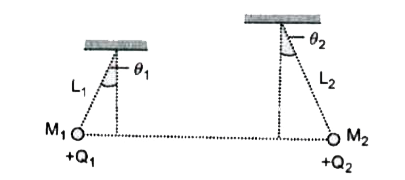K. E. of protons, when accelerated to one volt potentialSolution in Kannada
11840eV
1eV
1840 eV
0.5 eV
The correct Answer is:B, C
Step by step video, text & image solution for K. E. of protons, when accelerated to one volt potential by Physics experts to help you in doubts & scoring excellent marks in Class 12 exams.
Updated on:21/07/2023Topper's Solved these Questions
- ELECTRONS & PHOTONSBOOK - MODERN PUBLICATIONCHAPTER - ELECTRONS & PHOTONSEXERCISE - MULTIPLE CHOICE QUESTIONS (LEVEL-II)
63 Videos
- ELECTRONS & PHOTONSBOOK - MODERN PUBLICATIONCHAPTER - ELECTRONS & PHOTONSEXERCISE - MULTIPLE CHOICE QUESTIONS (LEVEL-III)
9 Videos
- ELECTROMAGNETIC WAVESBOOK - MODERN PUBLICATIONCHAPTER - ELECTROMAGNETIC WAVESEXERCISE - RECENT COMPETITIVE QUESTIONS
4 Videos
- ELECTROSTATICSBOOK - MODERN PUBLICATIONCHAPTER - ELECTROSTATICSEXERCISE - RECENT COMPETITIVE QUESTIONS
39 Videos
Similar Questions
Maximum frequency of the photon produced by the union of a proton and a antiproton is (given : mp=1.67×10−27kg):
View SolutionEnergy required for the electron excitation in Li++ from the first to the third Bohr orbit is :
View SolutionThe speed of electromagnetic wave in vacuum depends upon the source of radiation
View SolutionTwo small spheres of masses M1andM2 are suspended by weightless insulating threads of lengths L1andL2 The spheres carry charges Q1andq2 respectively . The spheres are suspended such that they are in level with one another and the threads are inclined to the vertical at angles of θ1andθ2 as shown . Which one o fthe following conditions , if θ1=θ2 ?

View SolutionA proton when accelerated through a potential difference of V volt has a wavelength lamda associated with it. An alpha-particle in order to have the same lamda must be accelerated through a potential difference of
View SolutionThe energy which an e^(-) e acquires when accelerated through a potential difference of 1 volt is called
View SolutionWhen a proton is accelerated with 1 volt potential difference, then its kinetic energy is
View SolutionOne can define an alpha-Volt (αV) to be the energy acquired by an a particle when it is accelerated by a potential of 1 Volt. For this problem you may take a proton to be 2000 times heavier than an electron. Then
View SolutionAn alpha -particle when accelerated through a potential of V volt has a wavelength lambda associated with it, but if a proton in order to have same wavelength lambda by what potential difference it must be accelerated?
View Solution1 वोल्ट विभवान्तर पर त्वरित करने पर इलेक्ट्रॉन की ऊर्जा होती है :
View Solutionएक प्रोट्रॉन 500 वोल्ट के विभवान्तर से त्वरित किया जाता है । प्रोट्रॉन का वेग ज्ञात कीजिए ।
View SolutionThe proton when accelerated through a potential difference of V volt has a wavelength lamda associated with it. If an alpha -particle is to have the same wavelength lamda , it must be accelerated through a potential difference of
View SolutionA proton, when accelerated through a potential differnece of V = 29.6 V, has a wavelength lambda associated with it. An alpha- particle, in order to have the same lambda , must be accelerated through a potential difference of how many volts?
View Solutionजब प्रोटॉन को 1 वोल्ट के विभवांतर से त्वरित किया जाए तो इसकी गतिज ऊर्जा होगी
View Solutionएक प्रोटॉन और एक α-कण 100 वोल्ट के विभवान्तर से त्वरित किये जाते हैं। प्रोटॉन और α-कण के संगत तरंगदैर्ध्य का अनुपात होगा -
View Solution
